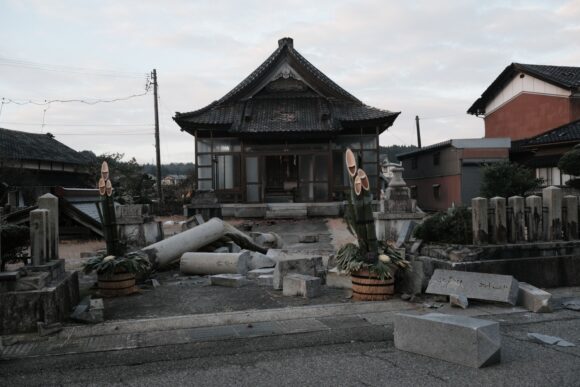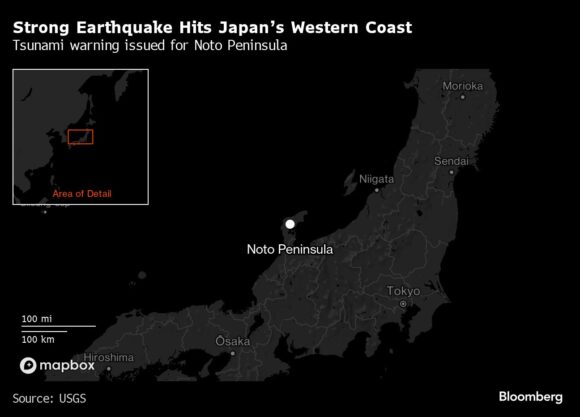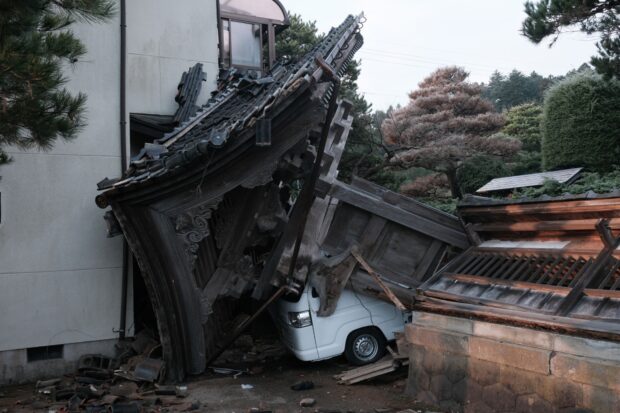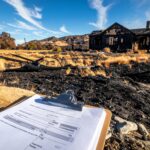At least 30 people were killed and scores injured in a powerful earthquake that hit off the Noto Peninsula on Japan’s northwest coast, toppling buildings, buckling roads and triggering a blaze that ripped through a city.
One of the places hardest hit from Monday’s magnitude-7.6 tremor was Wajima, a city of about 23,000 people known for its lacquerware and fishing port on the Sea of Japan. A fire in the heart of the city after the quake engulfed about 200 structures, Kyodo News reported.
While the blaze has mostly been contained, aftershocks were rattling the region about 315 kilometers (195 miles) northwest of Tokyo as rescue workers fanned out to look for victims trapped under rubble. Numerous families in the region spent the New Year holiday in evacuation centers and hundreds of people lined up for fresh water after the quake knocked out services.
A tsunami warning for the Sea of Japan coast was lifted Tuesday morning, the Japan Meteorological Agency said.
Prime Minister Fumio Kishida said the quake caused widespread damage and he had set up a task force to help in rescue and repair operations. Networks briefly broke away from a live broadcast of his news conference when a large aftershock hit the region, the latest in a series of dozens.
At least 30 people have been killed in Ishikawa with at least 15 in Wajima, the prefecture said in a statement. So far, the largest tsunami recorded after the New Year’s Day quake was in Wajima, at about 1.2 meters (4 feet).
No official estimates have been released on the damage. While the toll is expected to be enormous for many people in the region, Tokio Marine Holdings Equity Research said in a research note the event is not expected to cause major strains on insurance companies.

Markets are closed in Japan through Wednesday for New Year’s. The yen fell against most of its Group-of-10 peers in holiday-thinned trading as investors monitored conditions after the earthquake.
There is not a lot of industry in the peninsula, but some major companies have production sites in nearby areas affected by the quake. Murata Manufacturing Co. has 13 plants making electronics components in the prefectures of Toyama, Ishikawa and Fukui, with a spokesperson saying the company is looking at the situation.
Semiconductor manufacturing system maker Kokusai Electric Corp. said the quake caused some damage to a facility at its office in Toyama and it was checking the supply chain situation. Komatsu Ltd. is assessing the impact on its facilities in Ishikawa and other areas, a spokesperson said.
Some train services were suspended and power plants halted operations, while several roads and an airport runway were closed due to the damage. Mobile phone services were affected. About 33,000 households were without power as of Tuesday at around 2 p.m., according to Hokuriku Electric, while parts of the region were also without running water.
President Joe Biden said his administration has been in touch with Japanese officials and the U.S. “stands ready to provide any necessary assistance for the Japanese people,” according to a White House statement.

Video from the region showed cracks ripping through streets, collapsed houses and one seven-story building resting on its side after it was tipped over by the quake.
Emperor Naruhito canceled a New Year public appearance planned for Tuesday in Tokyo out of consideration for the people affected by the quake, the Imperial Household Agency said.
Water in fuel pools inside reactor buildings of several units of Kashiwazaki-Kariwa Nuclear Power Plant in Niigata Prefecture overflowed as a result of the earthquake, but no radioactive materials have been detected outside the buildings, according to a statement from Tokyo Electric Power Co. The plant is currently offline.
The earthquake impacted several thermal power plants in the region. Hokuriku Electric Power Co.’s Nanao Ohta power plant’s coal-fired units were halted due to the quake, leading to a loss of about 1.2 gigawatts of capacity, according to Japan Electric Power Exchange’s website. Jera Co. also halted a gas-fired unit at its Joetsu power station for inspection and plans to restart it Tuesday, according to JEPX website.
Photograph: An earthquake-damaged house in Nanao in Nanao, Ishikawa Prefecture, Japan, on Tuesday, Jan. 2, 2024. Photo credit: Soichiro Koriyama/Bloomberg





















 What to Expect in 2026: U.S. P/C Results More Like 2024
What to Expect in 2026: U.S. P/C Results More Like 2024  AIG Partners With Amwins, Blackstone to Launch Lloyd’s Syndicate Using Palantir
AIG Partners With Amwins, Blackstone to Launch Lloyd’s Syndicate Using Palantir  Legal Finance and Insurance: From Confusion to Collaboration
Legal Finance and Insurance: From Confusion to Collaboration  Unpacking a Consumer Intervenor’s Novel Idea
Unpacking a Consumer Intervenor’s Novel Idea 